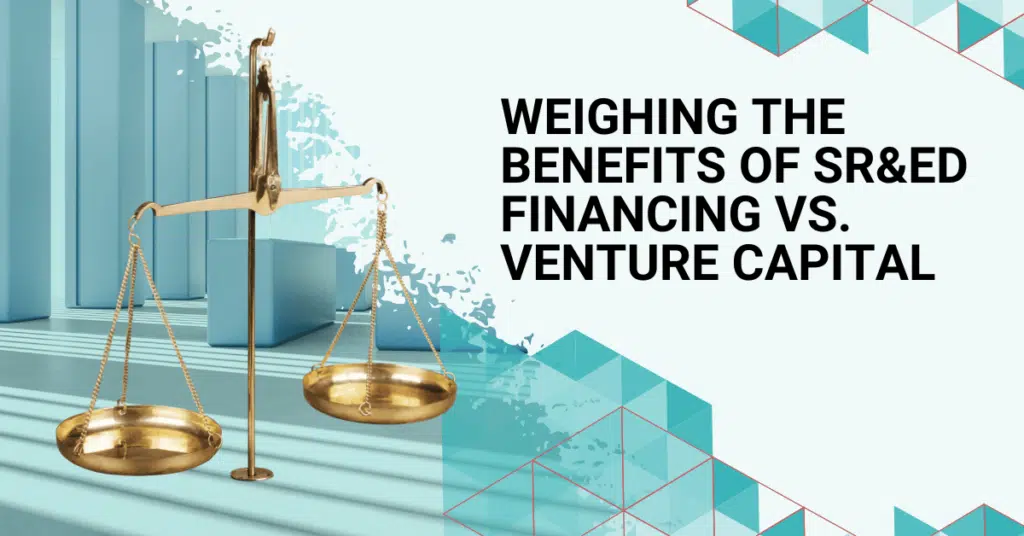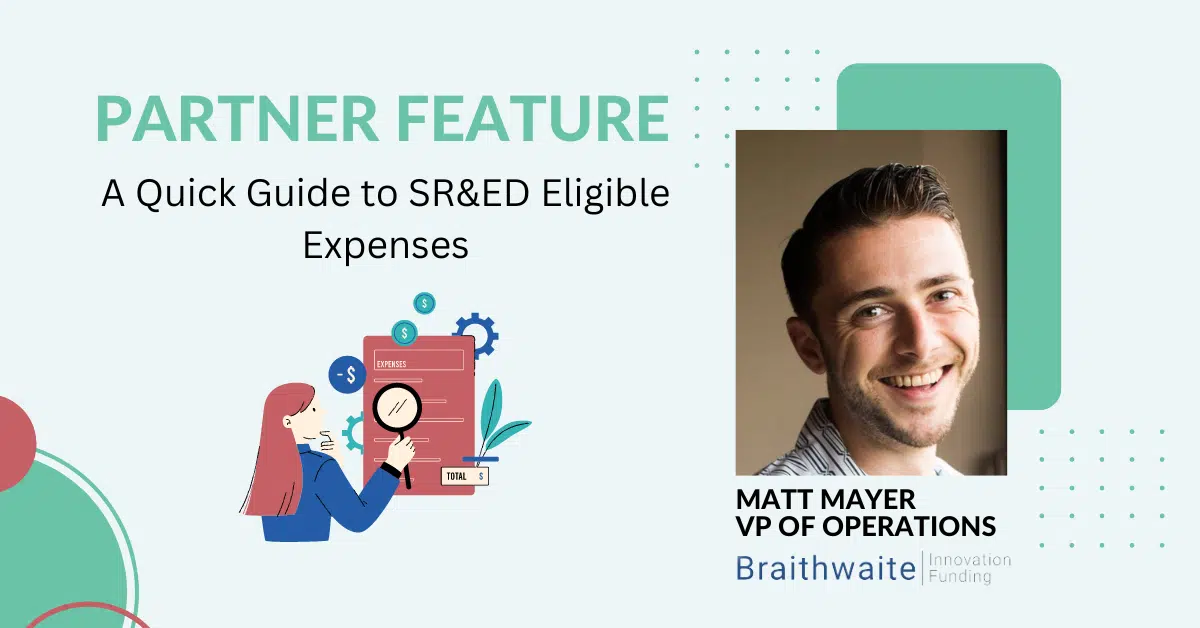If you’ve reached the next stage of your research and development (R&D) project, you’re likely on the hunt for additional capital. Research is expensive: in addition to the salaries paid to yourself or your research team, you’ll need to foot the bill for materials, overhead costs, and other related expenses. None of this is easy for a growing business, which is why many business owners seek alternative funding to help fuel their efforts and extend runway. There are many different sources of funding available to Canadian businesses involved in R&D and scientific exploration, with venture capital (VC) and Scientific Research and Experimental Development (SR&ED) tax credit financing being two popular options we’ll explore in this article.
Below, we’ll take a closer look at some of the specifics to be aware of when considering VC vs SR&ED financing options and why you may be surprised to learn just how beneficial opting for SR&ED financing can be for your business. Read on to learn more.
Non-Dilutive VS Dilutive Funding
When you own a business, especially one centered around achieving a scientific goal or objective, having control over your operations and decision-making is critical. At this stage of development, many founders want complete freedom to shape the company as they see fit. However, this autonomy means the founders have to forfeit valuable VC dollars and relationships, which has its pitfalls.
Simply put, giving away equity carries significant weight. Venture capitalists require those they partner with to sacrifice some of their valuable equity in exchange for funding, which can hinder your ability to structure your project as originally intended and adapt with ease down the road.
In contrast, SR&ED refunds come from the government of Canada as a reimbursement for eligible expenses incurred in previous tax years. Non-dilutive funding measures are often favourable for businesses, especially those that anticipate having to make changes down the line in order to best adapt to the evolving nature (and needs) of their project.
It’s worth noting here that in order to get an SR&ED refund, you need to spend on eligible expenditures. It’s a post-expense benefit, whereas VC investment doesn’t rely on expenses being incurred.
SR&ED Tax Credits Foster Research and Development
One of the best aspects of the SR&ED program is that it is explicitly designed to foster and support home-grown Canadian innovation. While venture capitalists may be more concerned with having direct and tangible returns on their financial investment, the SR&ED program recognizes the inherent risks and costs associated with R&D and scientific experimentation. Projects are not required to be a success to be deemed eligible. By utilizing SR&ED, businesses can secure funding while maintaining a strong focus on their research and development objectives.
The two aren’t mutually exclusive: many venture capital firms recognize the benefit of both the SR&ED program and financing SR&ED tax credits and encourage their portfolio companies to pursue this option as it provides valuable capital without diluting their ownership.
SR&ED Tax Credits Offer Reliable Funding
While you can forge strong, long-lasting relationships with venture capital partners, the reality of their specific funding capacity is that it will always be tied to internal goals, external market factors, and other variables that lay outside of your control. VC funding can be difficult to secure, especially in today’s environment. All of this means that in times of market uncertainty or volatility, you could find yourself lacking funds, leaving your R&D efforts in a precarious position.
SR&ED, on the other hand, is not tied to such variables and can offer entrepreneurs linear stability they can count on. Since SR&ED refunds are tied directly to the eligibility criteria and the nature of your R&D activities, you have a predictable form of financial support you can count on, allowing you to move forward with greater confidence.
However, directly comparing the two funding types is like comparing apples to tomatoes. Both are red, both are fruit, but both have different utility. Ask anyone who has tried adding tomatoes to pie or apples to spaghetti – both fruits are delicious in the right context, but can’t be directly exchanged.
SR&ED Tax Credits offer Wide-Ranging Eligibility
The SR&ED program is open to a wide range of businesses and industries, including those in the manufacturing, agriculture, and pharmaceutical sectors (to name a few). These kinds of companies are eligible for SR&ED benefits, so long as they meet eligibility standards.
The government extends SR&ED tax credits to thousands of businesses each year, whereas VCs are typically (and understandably) more selective in who they will partner with. VCs typically stick to a specific sector, meaning you will likely have less say in who you partner with. This may end up with less ideal conditions being put in place to receive capital.
SR&ED Advances
If you’re looking to sustain your research and innovation initiatives with SR&ED, Venbridge is here to help. When you partner with Venbridge, you’re partnering with an experienced SR&ED lender who understands your business’s needs.
Contact our team today to discover how we can partner with your team to enhance your R&D initiatives by financing your SR&ED credit.




